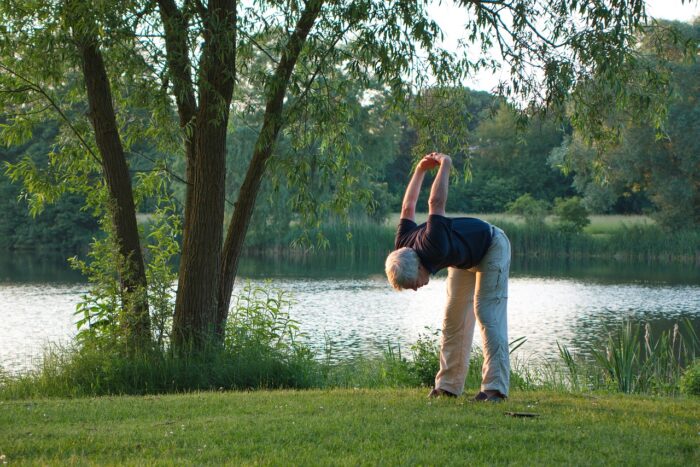
While walking is generally beneficial for overall health and can indirectly contribute to strengthening the muscles surrounding the lumbar spine, it may not specifically target or strengthen the lumbar muscles in the same way that targeted exercises do.
Walking can play a supportive role in maintaining spine health and alleviating lumbar spine pain through the following mechanisms…
Improving Posture
- Walking with proper posture can help maintain spinal alignment and reduce strain on the lumbar spine. Engaging the core muscles while walking can further support the spine and promote better posture.
Core Activation
- While walking, the muscles of the core, including those surrounding the lumbar spine, are engaged to stabilize the torso and pelvis. This can indirectly strengthen the lumbar muscles over time.
Enhancing Circulation
- Walking promotes blood flow throughout the body, including the muscles and tissues around the lumbar spine. Improved circulation can facilitate healing, reduce inflammation, and alleviate pain.
Increasing Flexibility
- Walking involves rhythmic movements of the lower body, which can help improve flexibility in the hips, pelvis, and lower back. Enhanced flexibility can reduce stiffness and tension in the lumbar muscles.
Weight Management
- Regular walking can contribute to weight management and overall fitness, which can reduce the load on the lumbar spine and decrease the risk of developing or exacerbating spine-related conditions.
Stress Reduction
- Walking can serve as a form of low-impact exercise that helps reduce stress and tension in the body, including the muscles of the lumbar spine. Lower stress levels may contribute to decreased muscle tightness and pain in the lumbar region.
Tips for Walking for Lumbar Health
- Maintain proper posture while walking, with your head up, shoulders back, and abdomen engaged.
- Start with short walks and gradually increase the duration and intensity over time.
- Incorporate brisk walking or inclines to challenge the muscles and increase cardiovascular benefits.
- Pay attention to any discomfort or pain during walking, and adjust your pace or route as needed.
- Combine walking with targeted exercises that specifically strengthen the lumbar muscles for comprehensive spine health.
While walking alone may not be sufficient to fully strengthen the lumbar muscles, it can be a valuable component of a balanced exercise routine aimed at promoting overall spine health and reducing lumbar spine pain. Consult with a healthcare professional or physical therapist to develop a personalized exercise plan tailored to your specific needs and condition.
Related Posts
Does Walking Help Lumbar Pain?
On
May 17, 2024
How Do You Massage Your Lumbar Spine?
On
August 6, 2024
Is Stretching Good For Lumbar Pain?
On
June 25, 2024
How Can I Improve My Lumbar Back Pain?
On
August 27, 2024



